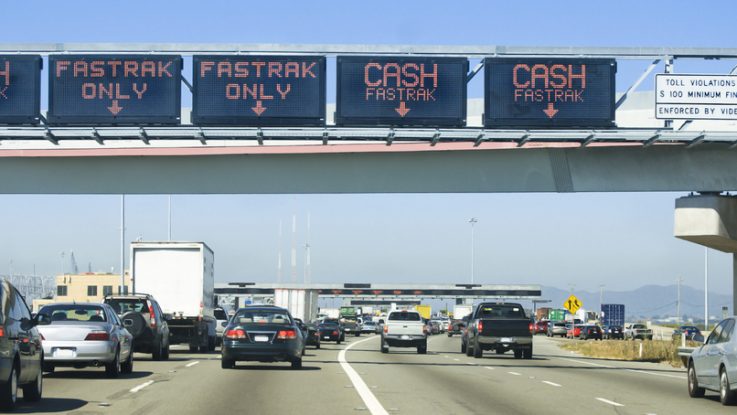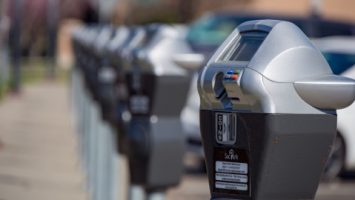
The Bay Area Toll Authority (BATA) and Caltrans – the state’s transportation agency – currently operate both electronic toll collection and cash lanes on seven state-owned toll bridges in the San Francisco metro area. The toll authority is now transitioning to an all-electronic payment system, phasing out cash transactions entirely. The transition from cash payments is expected to speed up bridge delay times by three to seven minutes in most cases, according to BATA.
In future, motorists will pay entirely with the electronic FasTrak system or, if without FasTrak accounts, will receive toll invoices sent to the address tied to their vehicle registration.
Along with decreased traffic delays, the upgrades planned for bridge toll plazas are expected to give traffic engineers a more effective set of technology tools for managing traffic.
“Removing toll booths/plazas allows for greater flexibility to manage congestion by enabling smart metering lights, congestion pricing, and other congestion management projects,” said the BATA staff report.
The switch to all-electronic payments will eliminate a number of toll-collector jobs across the area. Caltrans currently employs some 200 toll-collectors, the majority of them part-time workers, according to John Goodwin, the public information officer for the Metropolitan Transportation Commission (MTC).
“Caltrans is leading the way on transitioning these workers to other positions within the Caltrans organization,” he added. “And toll collectors will be given priority for openings elsewhere in the agency.”
The BATA Oversight Committee awarded a $4 million, five-year contract to WSP USA Inc., a consultant to provide oversight and management of the transition. The project is expected to cost $55 million and to take place over five years with a final timeline to be developed by WSP. WSP will be responsible for developing the toll system’s specifications, providing oversight of the program’s implementation, reviewing design plans, and helping to develop policies for all-electronic tolling.


